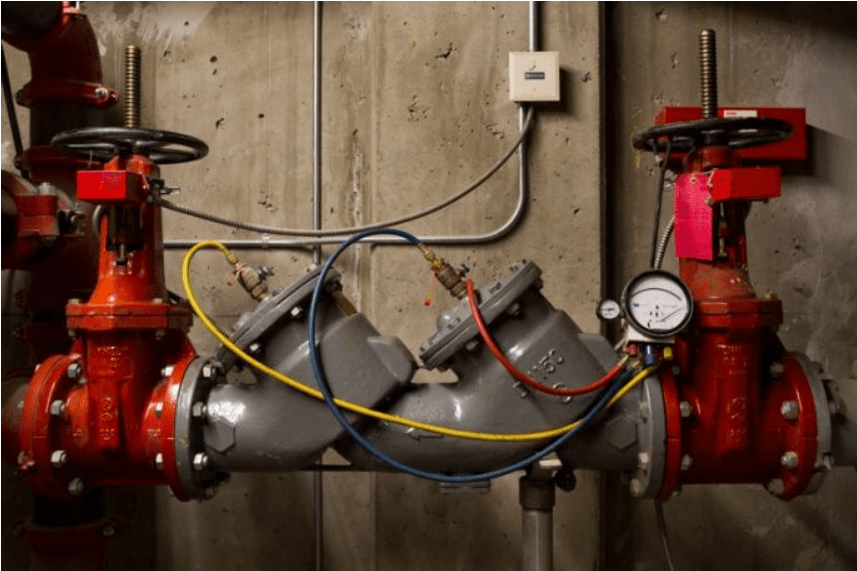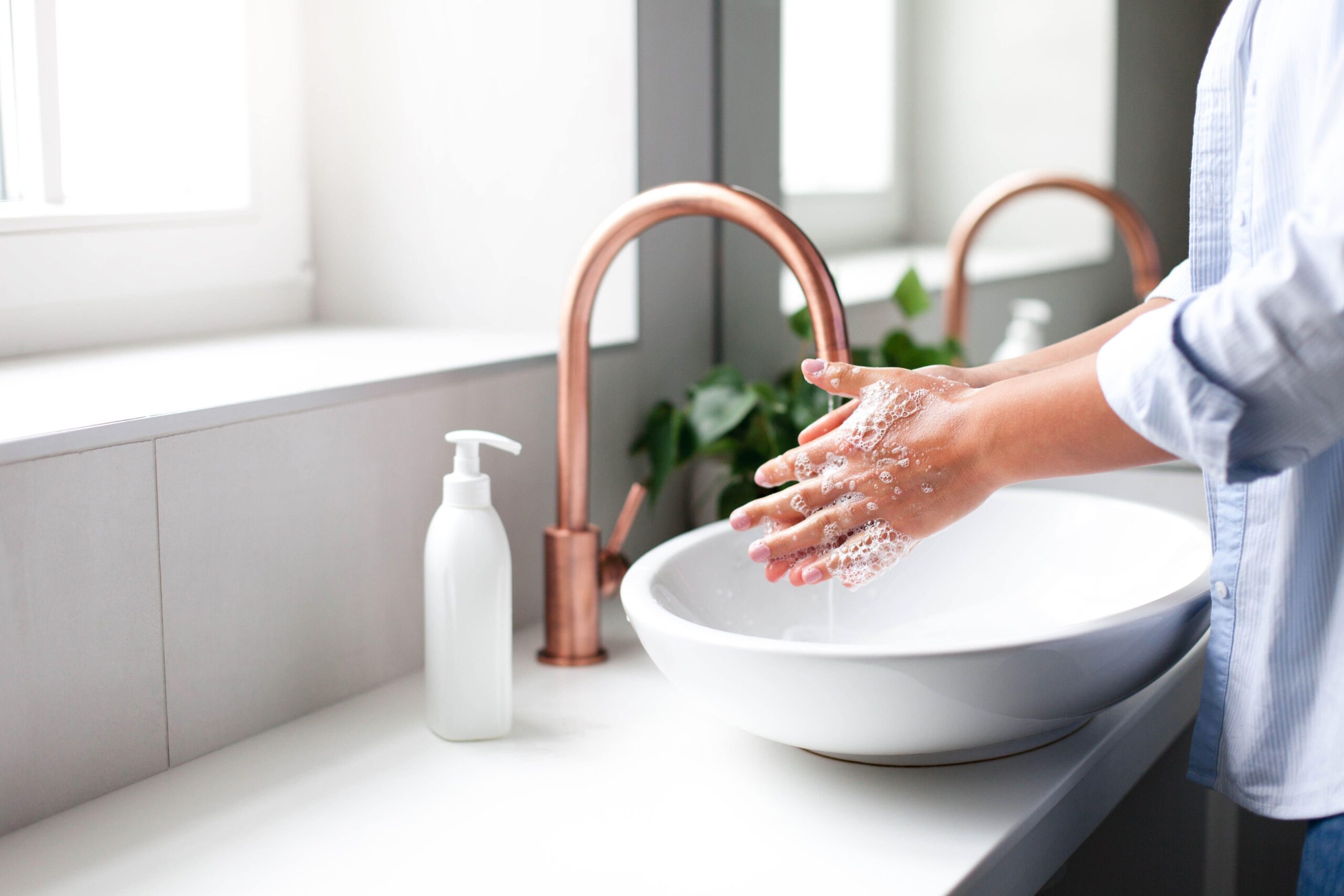Menu
Menu
The history of the Newark Water Treatment Plant began in 1886, the privately owned Newark Water Company began operating a pumping station and distribution system .The water was supplied by wells located near the site and filtered through a wood tub. In 1905, the City of Newark began construction of a municipal pumping station and distribution system that supplied water from the North Fork River to the City. Five years later the City purchased the Newark Water Company and connected that system with the municipal system. Newark began its history of innovation in water treatment in 1922 when it became the first municipal water works that used clarifiers to remove settled sludge by mechanical means. It was at this time that water softening and filtration processes were constructed. At that time the plant included four rapid sand filters, two settling basins, two flocculators, one sludge concentrator, a low lift pump house with electric pumps and a raw water intake structure. The plant had a rated capacity at that time of 6 MGD.
The next major plant expansions occurred in the mid-1950’s when the plant capacity was increased to 15 MGD, a second raw water intake structure was constructed and finished water storage capacity expanded on Horns Hill to 6 MG. Fluoridation was introduced in 1956. Lime sludge lagoons were built in 1965 and filter backwash was initiated in 1974. Over the next several years many of the plant components were rebuilt or modernized. The last major expansion at the plant was completed in 1996 when new chemical feed systems and pumping systems were installed. Along with this all plant processes, including rapid sand filters were completely rebuilt and upgraded.
Most recently, in 2004, the plant disinfection system was changed to using sodium hypochlorite and became one of the first plants in the United States to use UV disinfection. Although the processes and equipment have changed over the years, the goal of providing safe, aesthetically pleasing drinking water has remained the same. Today, the plant is located at the site of the original city-owned facility at 164 Waterworks Road in Newark. The Water Treatment Plant (WTP) continues to provide the nearly 48,000 residents of the City of Newark water for municipal and industrial purposes. The WTP is considered a conventional lime softening plant designed to treat 15 MGD with a design average flow of 11.5 MGD. The current annual peak flow is 9.5 MGD and the annual average is typically around 8.0 MGD.
Department Contact
Shawn L. Wagner,
Water Facilities Manager
Raw water is withdrawn from the North Fork of the Licking River through mechanical screens located along the river bank. The screens prevent fish, leaves and other suspended debris from entering the pumping station. Four raw water pumps deliver the screened water to the plant for processing. Raw water first enters the preoxidation basin where treatment in initiated. Chemicals such as potassium permanganate, chlorine and powdered activated carbon may be applied to the raw water flow for oxidation or adsorbtion of taste and odor-causing contaminants and other trace organic impurities.
This treated water then enters the rapid mix basin where chemical treatment is continued for softening and clarification. Turbine-type mixers are provided to rapidly disperse the chemicals into the water supply. Lime is used to raise the pH and cause the hardness constituents to be precipitated. Ferric sulfate has been in used since February of 1998 as a coagulant to enhance the removal of the hardness constituents and the turbidity from the water supply. The switch from Ferric chloride was made to help lower Lead and Copper at the tap. The chemically treated water supply then enters the flocculation basins. Paddle-type mixers gently mix the water to promote the completion of the chemical reactions and the formulation of settleable solids.
From these basins, water travels to three parallel sedimentation basins where a quiescent period is provided for settling and removal of suspended solids. The settled water supply then flows to the recarbonation basins where carbon dioxide is diffused into the water to readjust the pH back down to a lower level. Clarification is then completed in rapid gravity sand filters with the removal of any remaining fine colloidal/suspended solids.
After filtration, the water receives primary disinfection with chlorine in the chlorine contact basin. The disinfected water is then fluoridated before flowing to the clearwell, which provides storage to satisfy peak or emergency system demands.
Finally the finished water supply flows to the finished water pump station where four finished water pumps serve the City’s distribution system.
The City of Newark, Division of Water & Wastewater is dedicated to protecting and maintaining the high quality of Newark’s public water supply. On August 15, 2016, the Newark City Council passed Ordinance Number 16-31 providing for water quality protection and cross-connection control, which was previously administered by the Licking County Health Department. As a result, the City of Newark Water Department will now maintain a backflow prevention and cross-connection control program for each individual commercial and industrial water connection.
The term backflow refers to the flow from a possible source of contamination back into the drinking water system. It occurs when a cross-connection is created and a pressure reversal, either as back siphonage or backpressure, takes place in the water supply piping. ANY cross-connection poses a potential critical health risk.
The City of Newark, Division of Water & Wastewater enforces the state regulations regarding backflow prevention. You may refer to Ohio Revised Code 6109.13 and Ohio Administrative Code 3745-95 for more information. A backflow containment assembly is required to be installed after the meter for all industrial and commercial accounts. The installation of a backflow containment assembly must be completed by a licensed plumber. Testing of a backflow assembly is required when installed and every twelve months thereafter, and must be completed by a certified backflow tester. A certified backflow tester is typically a licensed plumber. Installation and testing of a backflow containment assembly is the responsibility of the water consumer. For a list of companies with certified testers in the Newark area, please click this link: Backflow Testing Companies.
Test results must be returned to the City of Newark Water Department, P.O. Box 4100, Newark, Ohio 43058-4100 on a Backflow Preventer Report Form

Backflow can happen in a residence also. If a hazard exists at a residential customer’s public water supply service connection, the customer will be required to install and maintain an appropriate backflow prevention device. The installation and testing must be done by personnel certified to test backflow preventers.
Water service may be discontinued if backflow devices are not tested and reported in a timely manner.
The City of Newark Water Treatment Plant performs lead and copper testing as required by the EPA. To monitor compliance with the regulation the City must sample water from individual homes. Sampling locations are selected based on the potential for lead components in the home plumbing system. Per EPA requirements, the City monitors 30 homes every 3 years. Residents in homes where samples are taken are notified of the results of those tests. If lead concentrations exceed an action level of 15 ug/L or copper concentrations exceed an action level of 1.3 mg/L in more than 10% of customer taps sampled, the system must undertake a number of additional actions to control corrosion.
If the action level for lead is exceeded, the system must inform the public about steps they should take to protect their health and take actions to control the lead levels.
The City of Newark’s levels of lead and copper are well below the action level. Each year this information along with other important information is published in the Consumer Confidence Report (CCR). This report can be found on the City’s website.

SDWA also requires plumbing fittings and fixtures intended to dispense water for human consumption (e.g., kitchen and bathroom faucets) meet a lead leaching standard. Those fittings and fixtures should be certified according to NSF/ANSI Standard 61 for lead reduction.
Refer to the manufacturer’s instructions for maintenance procedures. If not maintained properly, some treatment devices may increase lead and other contaminant levels.
A byproduct of the lime softening water treatment process is lime sludge. Lime sludge generally consists of 99.5% water with the remaining 0.5% a lime and silt mixture. An average daily water production rate of 8 MGD (millions gallons per day) generates 500,000 gallons of lime sludge each and everyday. To store and eventually dewater such huge quantities of lime sludge, the Water Division operates and maintains 3 lime sludge lagoons. The lime lagoons are situated on 37 acres located off of Cedar Run Road. #1 & #2 lagoon were built in 1964; #3 lagoon was built in the early to mid 1990s.
To address lime sludge on a regulatory basis, in 1998 the City of Newark developed a sludge management plan (SMP) for agricultural land application for the sludge generated at the water treatment plant. The accumulated dewatered lime sludge is removed periodically from the lagoons and applied to agricultural land owned and farmed by local farmers through contractual agreement with the City. Agricultural liming is a soil amendment technique used by the agricultural community to increase pH and to supplement Nitrogen to the soil for crop production. The contractor hired by the City operates under a Liming Materials License permitted through the Ohio Department of Agriculture